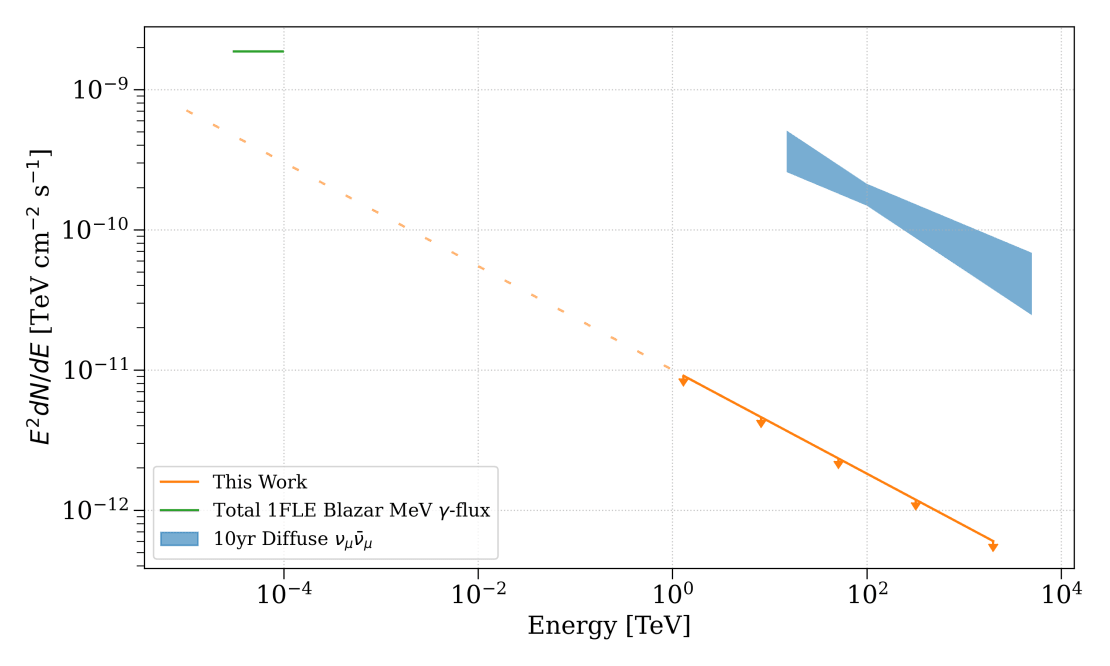Although high-energy cosmic rays have long been observed arriving at Earth, their origins have eluded researchers for years. The key may lie in neutrinos, which are tiny, nearly massless particles that can travel along a straight path from their sources. High-energy neutrinos that originate from outside our solar system are called cosmic neutrinos, which can be traced back to their cosmic accelerators.
The first evidence of high-energy astrophysical neutrinos originating from cosmic accelerators was detected by the IceCube Neutrino Observatory, which houses a cubic-kilometer-sized neutrino telescope buried deep within the Antarctic ice. Even though IceCube has detected astrophysical neutrinos before, their sources have been difficult to find. However, one of the more promising candidates for astrophysical neutrino production happens to be blazars.
Blazars are active galactic nuclei (AGN)—supermassive black holes at the centers of galaxies—that shoot out a relativistic jet of particles and light directed at Earth, making them some of the brightest and most powerful objects in the Universe. Because blazars can accelerate particles to extremely high energies, they are an attractive candidate as sources for astrophysical neutrinos. Among them, the blazar TXS 0506+05 was the first object to provide evidence for astrophysical neutrino emission.
In a new analysis presented by the IceCube Collaboration, researchers looked at a selection of blazars at lower energies than in previous studies. For the first time, a time-integrated stacking method was used to search for astrophysical neutrino emission from blazars in the previously unexplored low-energy gamma-ray catalog. The results of the study were presented in a paper recently accepted by The Astrophysical Journal.
The study revolves around the idea that when astrophysical neutrinos are produced, high-energy photons are created alongside them. These photons then lose energy while hurtling through space, while neutrinos do not. As a result, these lower-energy photons can be correlated with astrophysical neutrinos from blazars. For the stacking search, researchers looked for astrophysical neutrinos from a set of 137 blazars as a whole, rather than individually.
The 137 blazars used in the analysis were from the first Fermi-LAT low-energy catalog (1FLE) using 10 years of IceCube muon-neutrino data. The Large Area Telescope (LAT) on board the Fermi Gamma-ray Space Telescope (Fermi) is an observatory that searches the universe for gamma rays in the 20 MeV to over 300 GeV energy range. For the present study, researchers weighted each blazar for its probability of being a neutrino source by looking at the observed MeV photon flux. Although no neutrino excess was observed from these blazars, researchers set upper limits on their astrophysical neutrino flux at 1% of the astrophysical diffuse flux.

“This suggests that this catalog of blazars is not a strong contributor to astrophysical neutrinos observed by IceCube,” explained Michael Campana, a physics PhD student at Drexel University and lead on the analysis. “It also means that the search for sources of astrophysical neutrinos continues.”
Campana is hopeful that future multi messenger astronomy missions, such as the All-sky Medium-Energy Gamma-ray Observatory eXplorer (AMEGO-X) and enhanced-ASTROGRAM (e-ASTROGRAM), will improve gamma-ray observations in the MeV range. Both AMEGO-X and e-ASTROGRAM will allow for the detection of more objects in the MeV range, including blazars.
Moreover, implementation of the IceCube Upgrade, which will enable improved calibration, and IceCube-Gen2, a next-generation neutrino telescope 10 times larger than the current IceCube array, will also enhance future neutrino data analyses.
“Blazars still remain a possible source of astrophysical neutrinos, but it may be that a different energy range of photons holds the key, or that a higher number needs to be analyzed,” said Campana. “Together, improvements to both electromagnetic and neutrino observations will contribute to our goal of discovering the origin of astrophysical neutrinos and gaining a better understanding of the physical mechanisms within our universe.”
+ info “Search for Astrophysical Neutrinos from 1FLE Blazars with IceCube,” The IceCube Collaboration: R. Abbasi et al. Accepted by The Astrophysical Journal. arxiv.org/abs/2207.04946